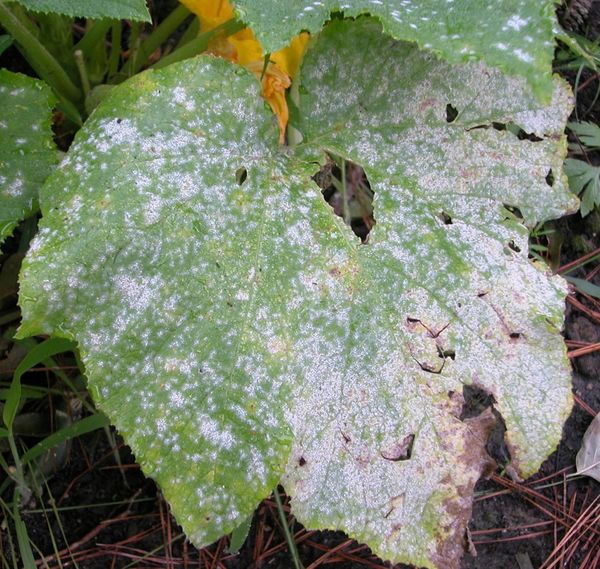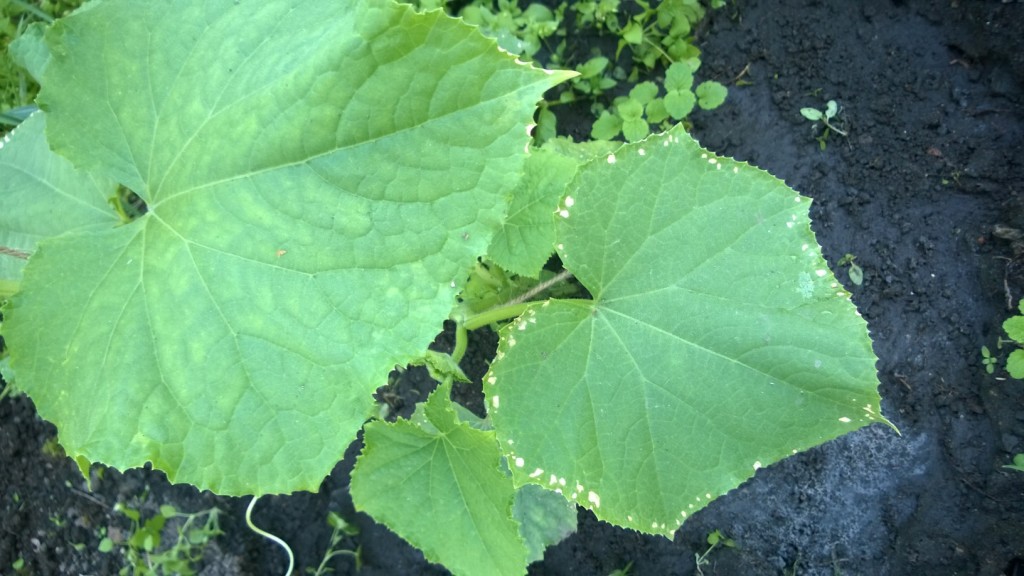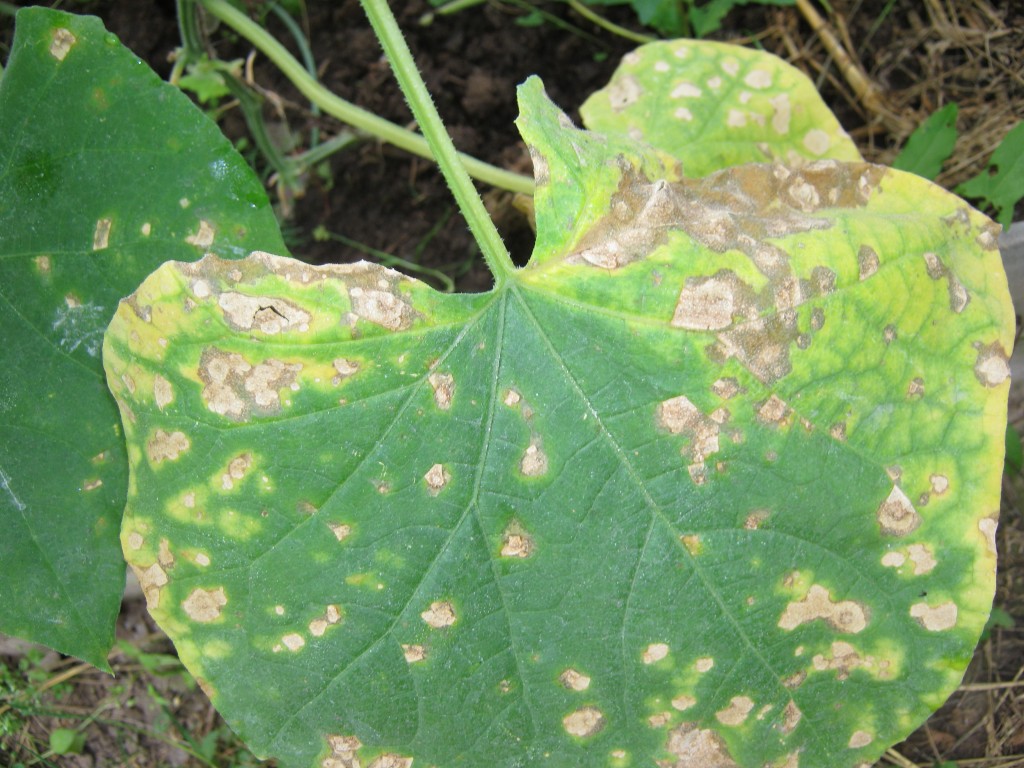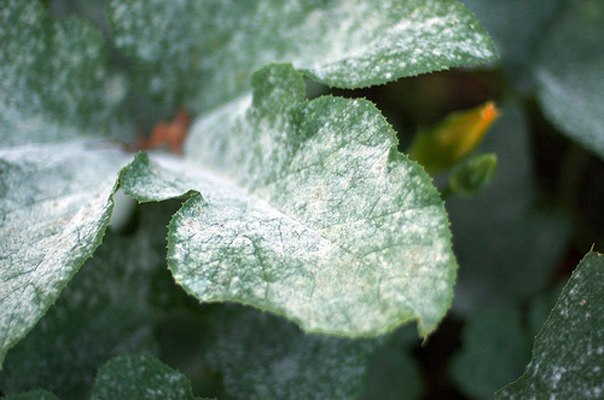How to ensure quality control of powdery mildew
Content
Features of the disease
The following pathogens are especially dangerous for cultivated plants:
- Sphaerotheca genus mors and pannosa species;
- The genus Erysiphe is a species of graminis and communis;
- The genus Uncinula is a necator species.

Downy mildew is one of those unpleasant blooms that not only spoils the aesthetic appearance of the plant, but also causes irreparable damage. Parasitic fungi, spread mainly on the green leaves of the culture. They penetrate deep into plant cells with their mycelium and begin to multiply in the form of a thick white layer that looks like flour. Under the influence of the disease, the leaves can no longer participate in photosynthesis, they gradually fold, fall off and die off.
Phlox starts to hurt, starting from the lower leaves. Then the top leaves are covered with linen, and soon the spots merge, causing enormous damage to the plant. The most favorable conditions for parasitic microorganisms are - temperature 18-20ºC and high humidity. Therefore, the main manifestation of the disease occurs in mid-summer and early autumn. The parasite develops very quickly - within 3-5 days. Overly planted soil and nearby weeds or other plants also contribute to this ailment. It is possible to combat powdery mildew, but it is always better to pay attention to preventive measures.
Prophylaxis

This type of flowers, like phlox, is quite unpretentious, but it is very interesting for fungal organisms. Downy mildew affects phlox very often. In this case, sulfur is an effective preventive measure. If during the summer you treat the plant with it several times, then powdery mildew treatment will not be needed. Phlox are pollinated with sulfur 2-3 times, adhering to an interval of 10-12 days. Such a procedure is quite simple: a small bag is made of gauze, into which sulfur powder is poured, then with the help of this bag the bushes are pollinated with sulfur powder.
Starting from the end of May, phlox can also be sprayed with a 1% solution of soda ash or copper-soap solution in the composition: copper sulfate - 25 g, soap - 200 g and water in a volume of 10 liters. The processing interval is one week.
Boric acid solution (you need to take it on the tip of a knife and stir in a five-liter watering can) and a pink potassium permanganate solution are also a good recharge and a precaution.

Do not forget about where and how to plant phlox. The soil must fully provide the plant with nutrients and be free enough for normal growth. It is not worth overloading the land with nitrogen fertilizers - this will only contribute to the development of the disease. And vice versa, potash and phosphorus fertilizers will become not only an additional source of nutrition for flowers, but also excellent remedies against mycoses.
On phlox, powdery mildew spreads from bottom to top, so periodically you need to check the stems and lower leaves for the presence of disease. If white dusting is found, in no case should you wipe it off - this will not eliminate the cause of the disease, but it can lull the vigilance and interfere with the timely provision of assistance to the diseased plant.
Video "Curing roses from disease"
How to treat
If, nevertheless, phloxes are covered with a white bloom, there is no need to despair - there is a treatment for flowers. There are many ways to fight disease. The only condition is that measures should be taken as soon as the disease manifests itself. Typically, the onset of the disease peaks in mid-summer.
If small areas of the plant are affected - several buds or leaves, then they must be carefully cut off and the flower should be rinsed with chemicals that can be purchased in specialized stores. These are different fungicides, as well as the famous Bordeaux mixture.

The latter is nothing more than an aqueous solution, which includes vitriol and lime. Bordeaux mixture can be prepared at home, but then you need to mix the components in the correct proportions: dilute 100 g of copper sulfate and 150 g of quicklime in 10 liters of water. To obtain a 3% solution, you will need: vitriol in an amount of 300 g, lime - 450 g, water - 10 liters. It should be noted that vitriol is one of the most effective and affordable remedies for mealy disease.
Sometimes treatment is given with antibiotics. The following remedies have a good effect: terramycin 100 U / ml, penicillin 100 U / ml and streptomycin 250 U / ml in a ratio of 1: 1: 1. The mixture is dissolved in water and sprayed on the leaves.
It is worth noting that phlox, like any other flowers, are very delicate, so chemical agents often have a detrimental effect not only on the parasitic microorganism, but also on the plant itself. Powdery mildew can be successfully dealt with with folk remedies.
Folk remedies

The most common and well-proven folk remedies are:
- garlic tincture. Grind 40-50 g of garlic (cut with a knife, squeeze, scroll in a meat grinder). Pour 2 liters of water and let it brew for 24 hours. With this solution, you should wipe the leaves of the diseased plant;
- infusion of manure. Another great remedy for illness. To prepare it, you need to pour cow dung with water in a ratio of 1: 3 (that is, 1 part mullein to 3 parts water), insist it in the sun for 4-5 days for fermentation, then strain. The resulting infusion is diluted with water 1: 1 and you can water phlox with it. In this case, the procedure is carried out in the evening to avoid direct sunlight;
- infusion of ash. Stir the sifted ash in the amount of 1 kg in 10 liters of water, preheated in the sun. Insist the mixture for 5-7 days, then pour into a clean bucket. You do not need to filter such a product, it settles well enough and becomes almost transparent. You can also add a little soap for better adhesion to the plant. With infusion, you can wipe the leaves or sprinkle them;
- infusion of decayed herbs. For the preparation of such a remedy, weeds or any herbs are used. They are mixed, torn and filled with hot water. The proportion of the solution is 1: 1. Then they are also defended for about 5 days, filtered and used to treat flowers;
- horsetail decoction. Like other home remedies, this broth can successfully defeat powdery mildew. 1 kg of fresh horsetail (150 g can be dry) should be soaked in 10 liters of water, and left to stand for one night. Then boil and cook for 30 minutes. The broth is cooled, filtered, diluted with water (1: 5). The tincture is ready;
- lactic acid bacteria. These can be found in every home - in sour milk, kefir or yogurt. By collecting the serum from them and diluting it with cold water (1:10), the pathogen can be effectively eliminated.

Treatment of leucorrhoea with folk remedies is based on the action of microorganisms that multiply in large quantities in decoctions and infusions during fermentation, and can suppress the growth of colonies of filamentous fungi (pathogens of powdery mildew), falling on the affected area of the plant. A huge plus is that this method of eliminating the disease does not harm the plant itself.
Powdery mildew is not just a disease, it is a parasitic microorganism that can cause a large number of domestic plants to wilt. There are effective measures against this disease. You can fight the parasite in different ways - these are traditional folk remedies and modern chemicals and even antibiotics. The choice is up to the owner. In order for phlox to grow healthy and have a wonderful appearance, preventive measures cannot be neglected and it is important to provide assistance to the affected plant as soon as the development of the disease becomes noticeable. The gardener's "first aid kit" should always contain vitriol, potassium permanganate, sulfur powder, as well as the necessary knowledge for making homemade recipes.
Video "Plant Pest Control"
To ensure proper pest control, you need to be as knowledgeable as possible. The following video will help you with this.
